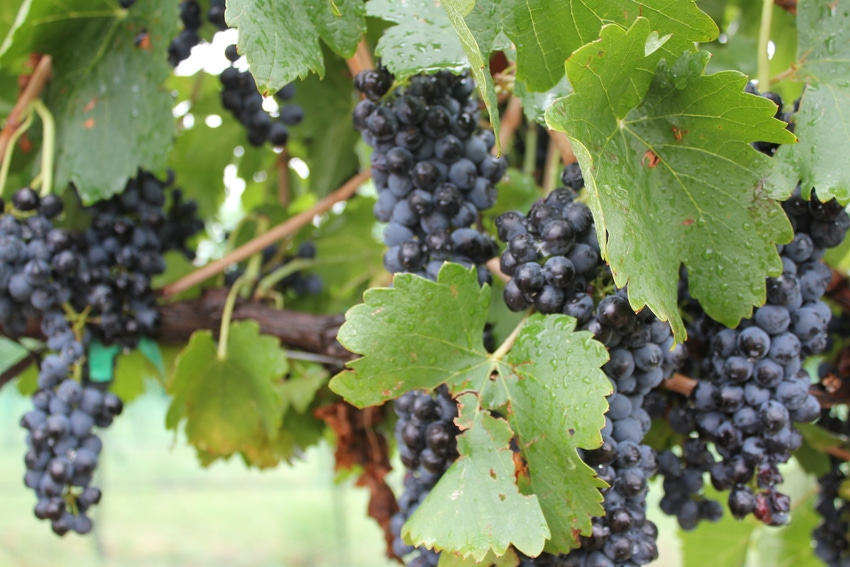
Ordinarily by now, we’d be knee-deep in statistics found in the annual crush report, sponsored by the California Association of Winegrape Growers. Unfortunately, the deadline for wineries to submit purchase data to the USDA from their 2018 harvest came during the recent government shutdown, delaying timely publication of the report from its usual February preliminary and March final appearance.
The latest word from the California Department of Food and Agriculture is that there will be no preliminary report this year, only a final report, which will be released on April 10 (the 2018 California Grape Acreage Report goes public on April 19). However, there are some updated numbers from other sources that deal with grapes and their consumption in liquid form.
Wines & Vines Analytics 2019 reported a slowing of 1.2 percent in U.S. market consumption with a slight (3.7 percent) increase in dollar value, suggesting that while drinking may be a bit less, quality taste is improving. Total dollar value of the U.S. wine market in 2018 was $70.5 billion with $47.2 billion of that in domestic wines.
Another report by ISWR (International Wine & Spirits Research) showed that while alcohol sales in this country were in a slight decline over the 12 months of calendar 2018, “U.S. wine drinking racked up its 24th year of consecutive growth.”
Slight growth
While total alcohol sales dipped 0.8 percent (with beer the biggest loser), 2018 wine sales built on modest growth in both 2016 and 2017 and posted latest year sales that were up 0.4 percent. “The steady upward trend is expected to continue with IWSR forecasting another increase of about 0.3 percent next year,” they reported.
ISWR President Brandy Rand said, “It’s clear that while Americans are drinking less overall, likely a result of the trend toward health and wellness, wine volume has steadily increased, particularly among the top wine brands and the sparkling wine category, a trend we expect we’ll continue to see in the coming years. Also of note, is the increasing number of winery permits being issued in the U.S., another indicator of the overall interest in the wine category.”
There are now 13,000 wineries in the United States, a number that increased by almost one thousand over 2018 figures. According to these statistics, the still wine segment has ticked up incrementally to 87.3 percent while sparkling wines increased by 4.3 percent.
The most popular still wine continues to be rose. “Continued innovation within the red wine segment, the barrel-aged red blends, is also driving interest,” according to Rand. The second largest U.S. wine market share belongs to sparkling wines with an 11 percent hold and 2018 growth up 4.3 percent. Rand cited its affordability, compared with champagne, as one reason for its popularity.
Domestic, organic wines
Domestic wines outperformed the others in 2018 with most popular import consumption involving products from France and New Zealand. And although IWSR does not publish varietal information, Rand estimated the leader might be chardonnay with cabernet sauvignon and pinot grigio a close second.
Organic wines also continue to gain ground. Although current market share volume is small, IWSR estimates organic wine consumption in the U.S. grew 13.5 percent in 2018, and that kind of growth is anticipated to continue.
Another take on the marketplace comes from Wine Industry Advisor and quotes Justin Charbonneau, co-founder of Grape Connect, as predicting both problems and opportunities in 2019.
“Bulk wine and grape prices will drop in California initiating a sharp shift away from long-term contracts (but) with record-setting 2018 harvests, compelling opportunities will be created for savvy buyers and sellers in the spot bulk wine and grape market,” Charbonneau says.
Forbes magazine, in its 2018 State of the Wine Industry status report, put U.S. consumption at 770 million gallons with a projection of “total volume growth leveling out.” The report predicts that circumstances aiding the industry’s 20+-year-growth trajectory “cannot be repeated” and “successful wineries 10 years from now will be those that adapted to a different consumer with different values. The boom may taper off for many, but could continue for those vigilant to stay market-savvy and adaptable.”
The message at the recent Sonoma County Winegrowers annual seminar was that some growers are still holding extra fruit with no buyers, facing 2019 with that over-supply and what has been termed “an end to a two-decade-long good ride.”
About the Author(s)
You May Also Like




